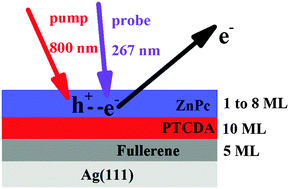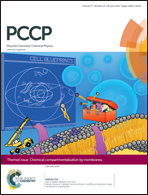Non-fullerene acceptors: exciton dissociation with PTCDA versus C60
Abstract
Extensive development of new polymer and small molecule donors has helped produce a steady increase in the efficiency of organic photovoltaic (OPV) devices. However, OPV technology would also benefit from the introduction of non-fullerene acceptors. Unfortunately, efforts to replace fullerenes have typically led to significantly reduced efficiencies. A number of possible explanations for reduced efficiencies with non-fullerene acceptors compared to fullerene acceptors have been suggested, including the formation of unfavorable morphologies in non-fullerene systems and/or favorable excitation/carrier delocalization in fullerenes. In addition, enhanced exciton dissociation associated with fundamental characteristics of the fullerene molecular electronic states has also been suggested. We used time-resolved two-photon photoemission (TR-2PPE) to directly compare exciton dissociation at interfaces between zinc phthalocyanine (ZnPc) interfaces and the non-fullerene acceptor, perylene tetracarboxylic dianhydride (PTCDA) versus dissociation measured at the analogous interface with C60, and thus help discriminate between these potential explanations. Exciton dissociation rates are comparable for phthalocyanine interfaces with both acceptors, allowing us to suggest a hierarchy for the importance of various effects producing higher efficiencies with fullerene acceptors.


 Please wait while we load your content...
Please wait while we load your content...